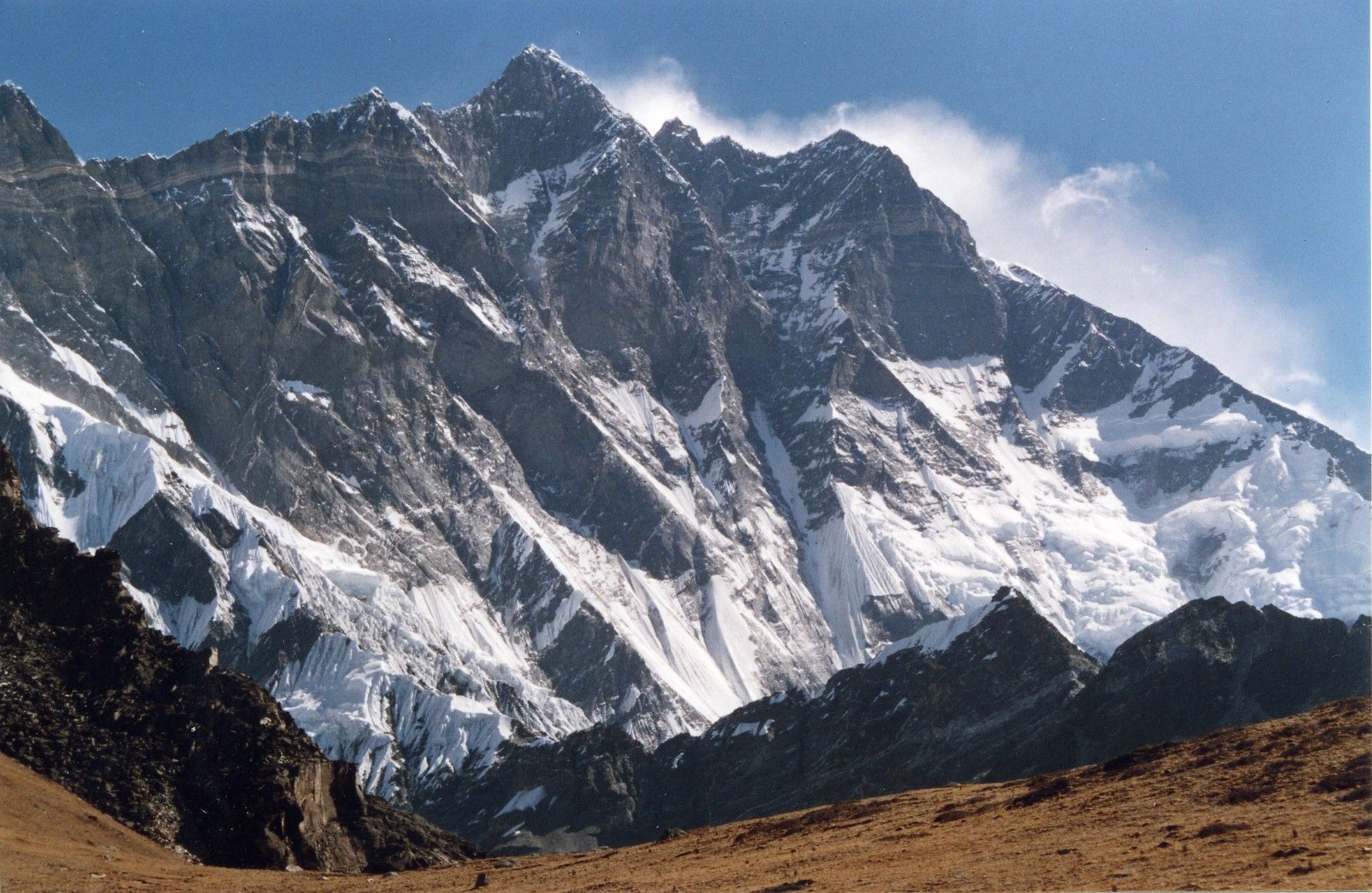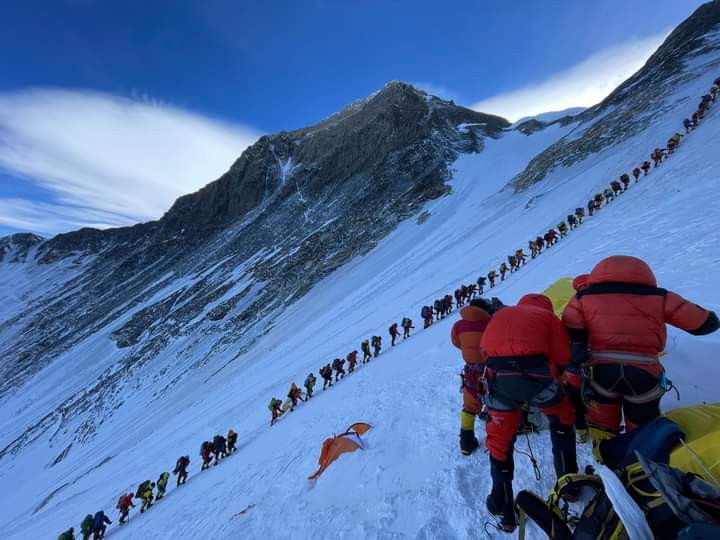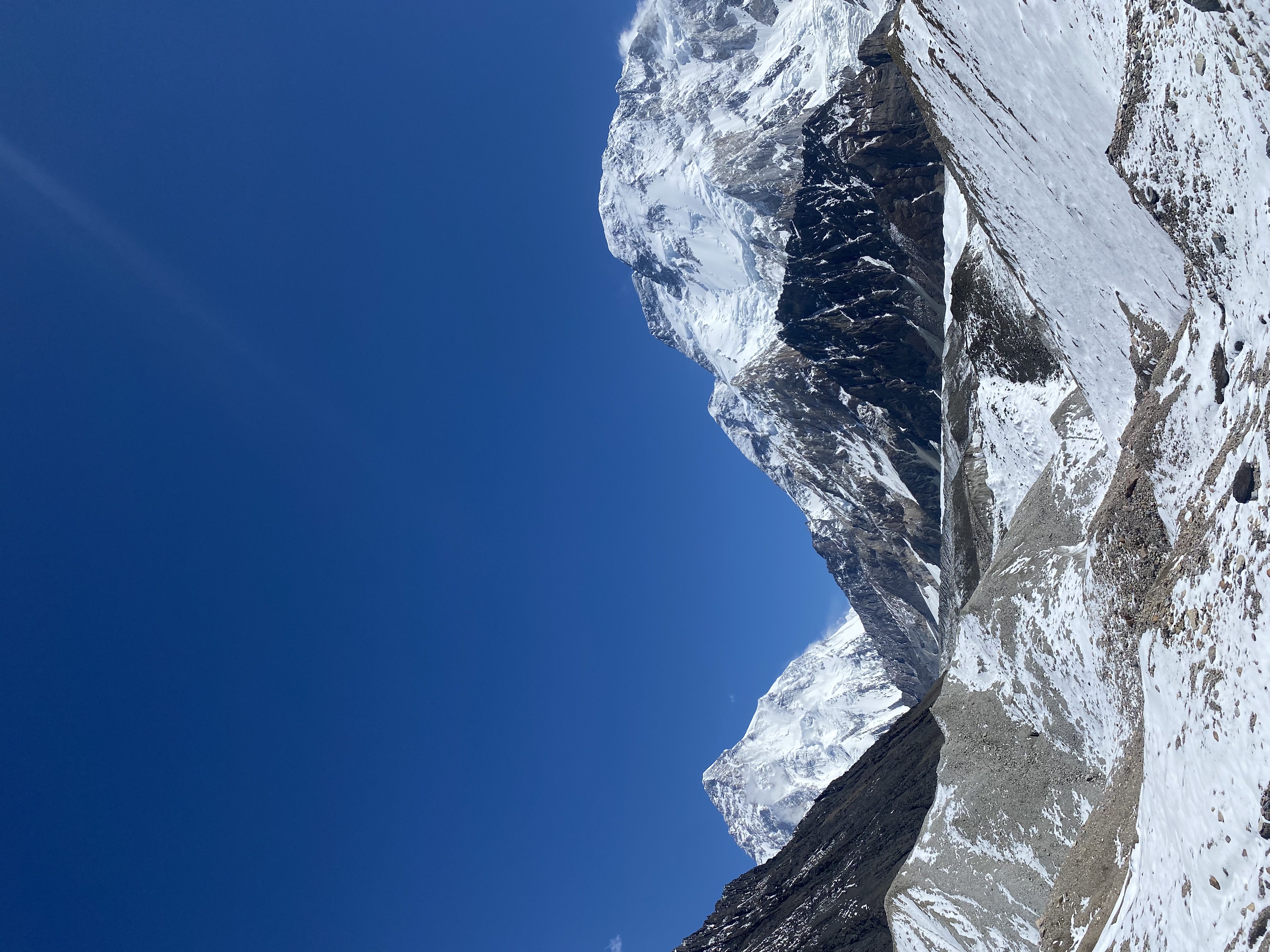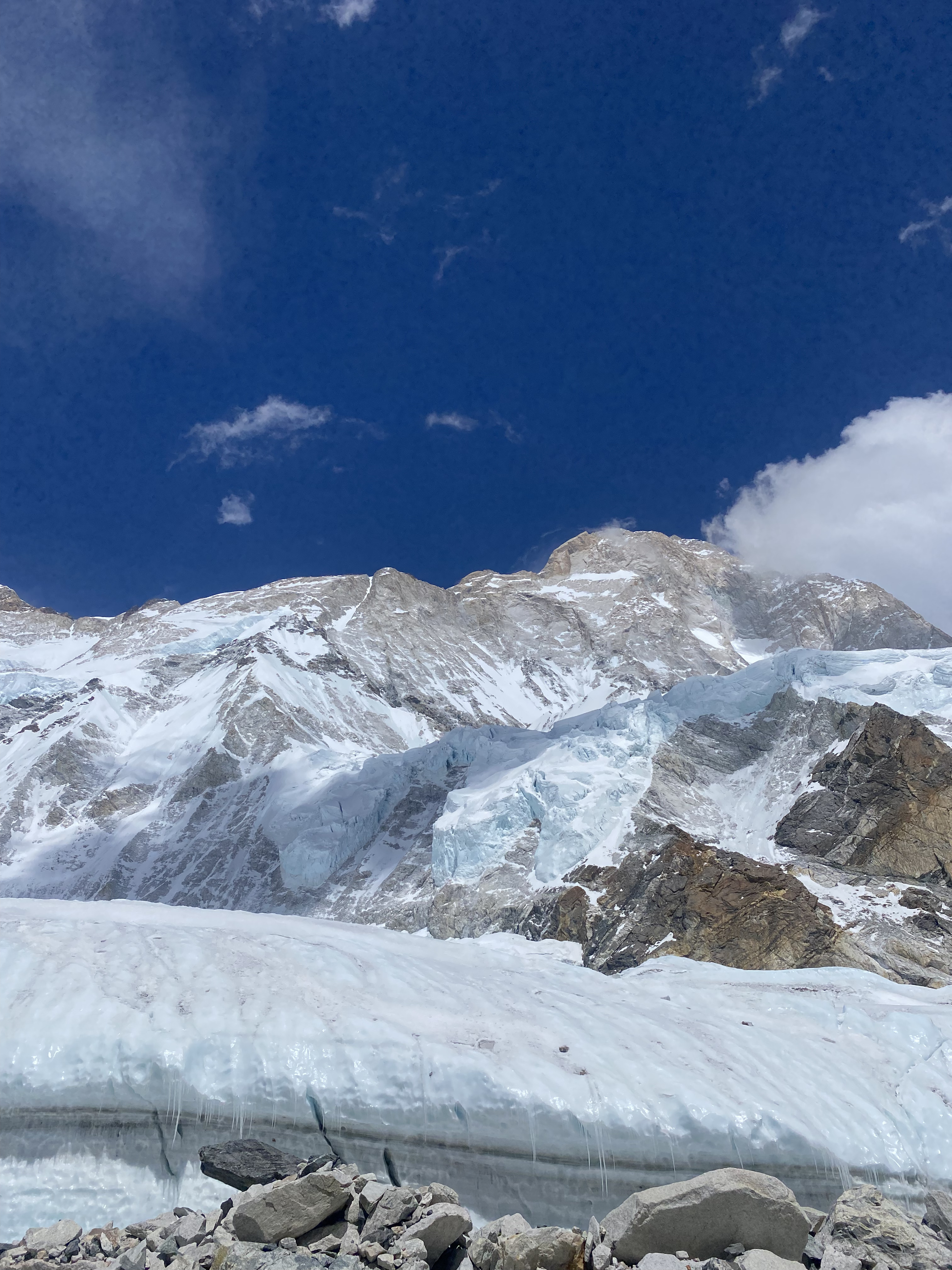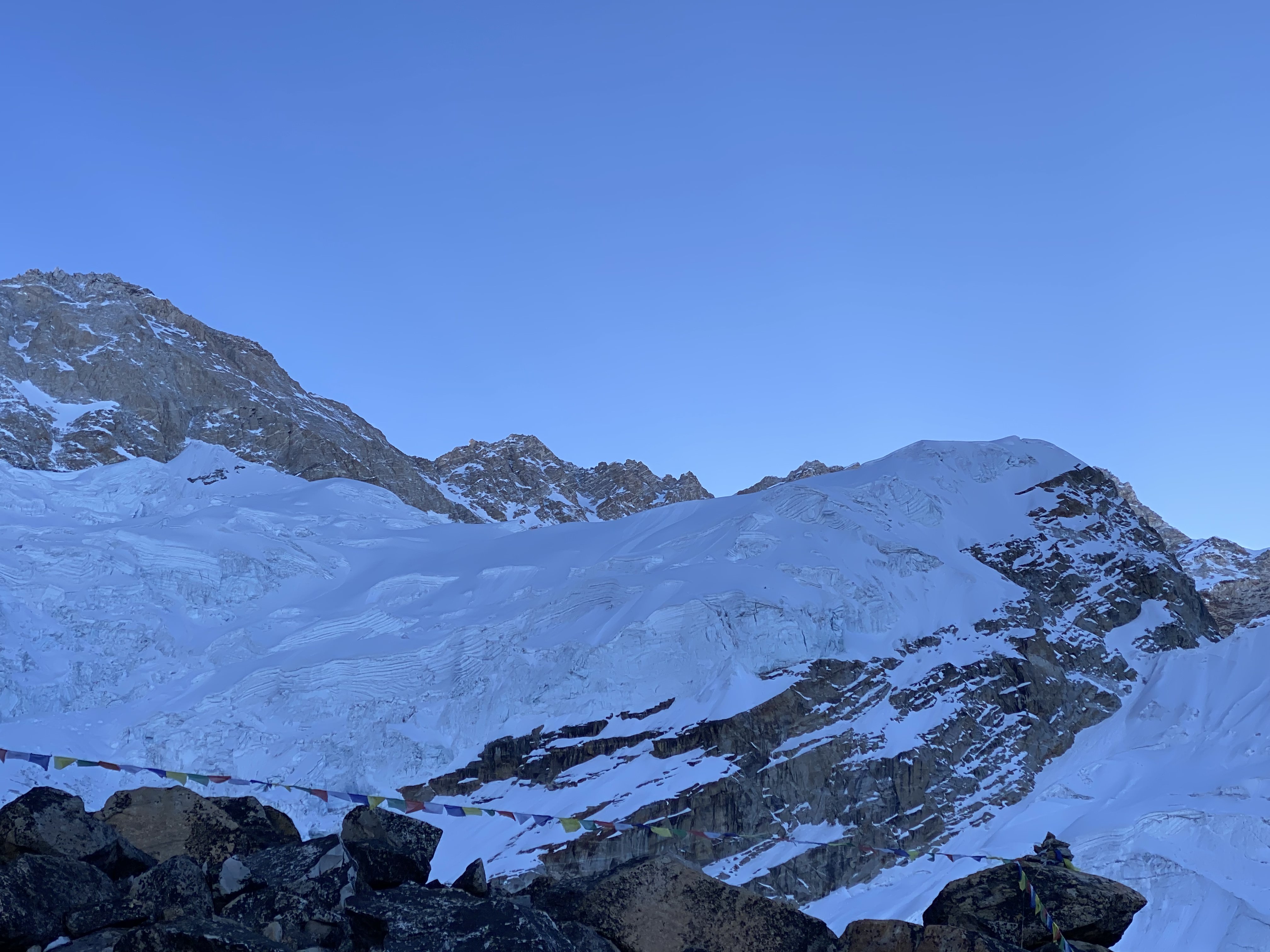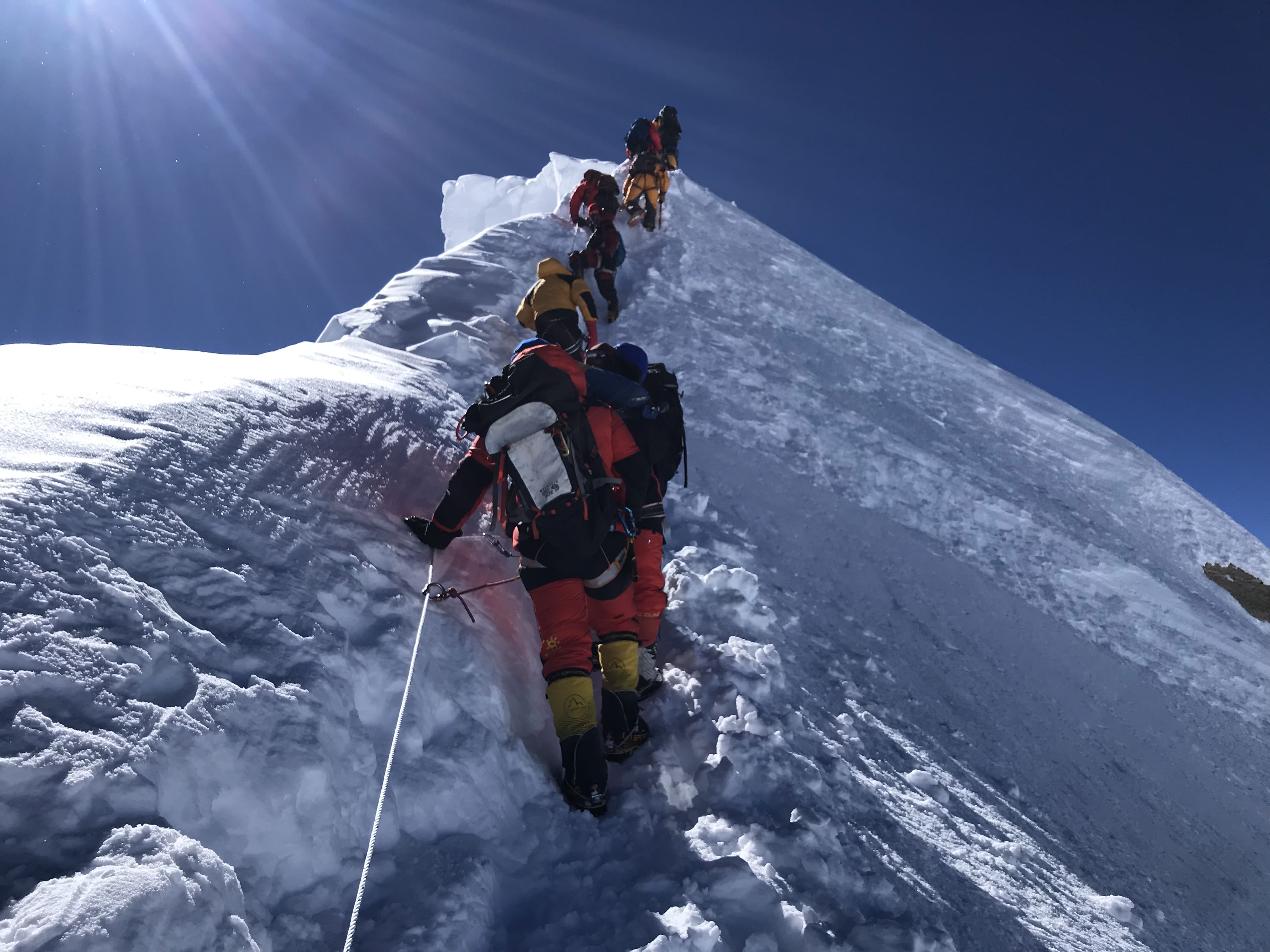The Lhotse Expedition is not your typical mountain trek—it’s an ultimate test of endurance, skill, and determination. Reserved for seasoned mountaineers, summiting Lhotse is a badge of honor, a testament to human perseverance, and an opportunity to witness the world from a breathtaking vantage point. However, this climb is not for the faint-hearted. With its towering heights and unpredictable weather conditions, Lhotse demands respect, preparation, and unwavering resolve.
Nestled in the heart of the Himalayas, Lhotse stands at a staggering 8,516 meters (27,940 feet), making it the fourth-highest peak in the world. Its name, meaning “South Peak” in Tibetan, reflects its close proximity to Mount Everest. Sharing the same climbing route up to Camp 3, Lhotse offers an equally thrilling yet distinct adventure, marked by its iconic ice walls and technical challenges.
Bridging the Nepal-Tibet border, Lhotse’s coordinates (27.9619° N latitude and 86.9337° E longitude) place it within the impressive Everest region massif. This strategic location creates a breathtaking landscape of snow-clad ridges, glacial valleys, and towering peaks, making it a dream destination for adventurers seeking both physical and visual majesty.
For mountaineers, Lhotse is a proving ground. The ascent involves navigating rugged icefalls, crevasses, and near-vertical ice slopes. One of the most overwhelming sections is the infamous Lhotse Face—a steep, icy wall where climbers rely on fixed ropes, ice axes, and intense willpower to advance. The climb is not just about physical strength but also mental resilience. The thin air, extreme cold, and demanding technical routes make Lhotse an ultimate challenge.
Beyond the climb itself, the journey to Lhotse is deeply enriching. The expedition begins with a trek through the Khumbu region, home to the resilient and warm-hearted Sherpas. As climbers pass through picturesque mountain villages, they witness fluttering prayer flags, ancient monasteries, and the rhythmic sounds of chanting monks. This spiritual energy adds depth to the adventure, reminding climbers of the rich traditions and history woven into the Himalayas.
Sherpas play a crucial role in every Lhotse expedition, bringing invaluable expertise and deep knowledge of the terrain. Their dedication and courage make the climb possible, and interacting with them offers a unique cultural exchange, adding meaning beyond the physical challenge.
The Lhotse expedition typically spans around 45 days, allowing for proper acclimatization, technical training, and the climb itself. The journey begins at Lhotse Base Camp (5,364 meters / 17,598 feet), where climbers spend time adjusting to high altitudes before tackling the infamous Khumbu Icefall. This ever-shifting maze of ice seracs and crevasses demands careful navigation, testing both skill and patience.
From there, climbers enter the Western Cwm, a vast glacial valley leading to the base of the Lhotse Face. This sheer ice wall stands as one of the most challenging segments, requiring careful technique and endurance. Once past the Lhotse Face, climbers reach the South Col (7,925 meters / 26,000 feet), a crucial staging ground for the final push.
The last stretch is through the Death Zone—where oxygen levels are critically low, and every step feels like a battle against nature. But those who conquer this challenge are rewarded with an unforgettable panorama from the summit—Everest, Makalu, and the vast expanse of the Himalayas stretching as far as the eye can see.
Lhotse is more than a mountain—it’s a personal and spiritual journey. Many climbers describe reaching the summit as a life-changing experience, not just for the physical achievement but for the deep self-reflection it inspires. The isolation, the silence, the raw beauty of the towering peaks—everything about Lhotse leaves an indelible mark on those who dare to take on the challenge.
Reaching the top is only half the battle. The descent requires just as much caution and skill. Exhaustion, unpredictable weather, and icefalls make this phase equally demanding. However, as climbers retrace their steps through the icefields and down to Base Camp, they have the chance to reflect on their achievement, soaking in the unreal landscapes one last time.
Not everyone dreams of summiting Lhotse, but that doesn’t mean they can’t experience its magic. The region offers incredible trekking routes that allow adventurers to explore the stunning landscapes without the technical demands of climbing. Trekkers can visit ancient monasteries, stay in traditional Sherpa villages, and marvel at the pristine glaciers—all while enjoying the spirit of high-altitude exploration.
Lhotse was first conquered on May 18, 1956, by Swiss climbers Fritz Luchsinger and Ernst Reiss, marking a significant milestone in Himalayan mountaineering. Since then, numerous climbers have followed in their footsteps, each adding to Lhotse’s legacy as one of the most challenging yet rewarding peaks to conquer.
Lhotse is not for casual adventurers. If you’re considering this expedition, here’s what you need to be prepared for:
-
Peak Physical Fitness & Experience: This is a demanding, high-altitude climb with extreme technical sections. Prior experience with ice climbing and high-altitude mountaineering is a must.
-
Mental Resilience: The journey will test your limits. The ability to stay focused under pressure is just as crucial as physical strength.
-
Financial Investment: Climbing Lhotse is expensive due to logistics, permits, gear, and expert guides. Planning and budgeting are essential.
-
Weather & Safety: Conditions can change rapidly. Having a solid support team and expert guidance is crucial for a safe ascent and descent.
-
Unparalleled Views: The summit rewards climbers with one of the most spectacular panoramic views in the world.
-
Ultimate Challenge: A true test of endurance, skill, and determination for experienced climbers.
-
Cultural Immersion: Experience the warmth and traditions of the Sherpa community.
-
A Life-Changing Experience: Few adventures offer the mix of thrill, beauty, and introspection that Lhotse provides.
For those who dare to take on the Lhotse Expedition, the rewards are beyond measure. It’s not just about reaching the summit—it’s about the journey, the personal growth, and the memories created along the way. Whether you’re an experienced mountaineer chasing your next big challenge or a trekker wanting to witness the majesty of the Himalayas up close, Lhotse promises an adventure that will stay with you forever.
